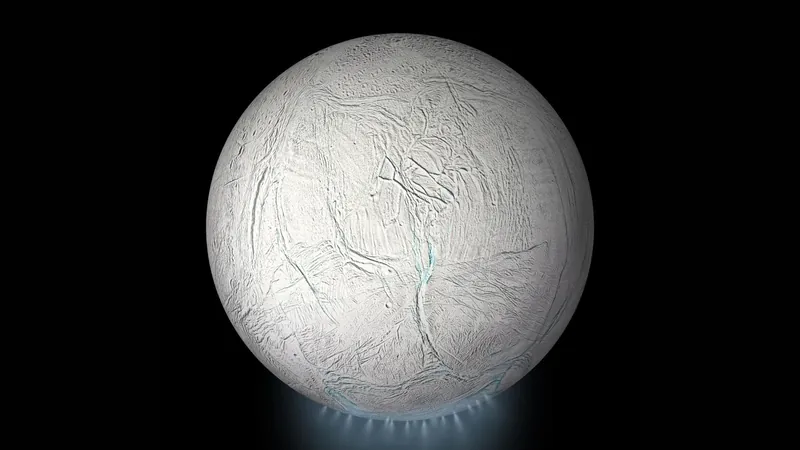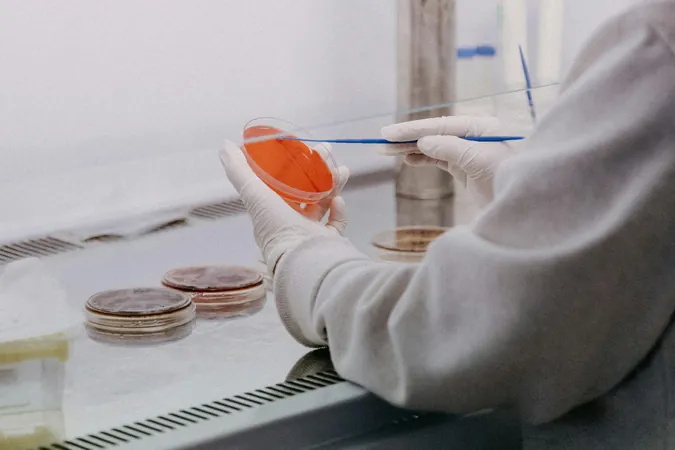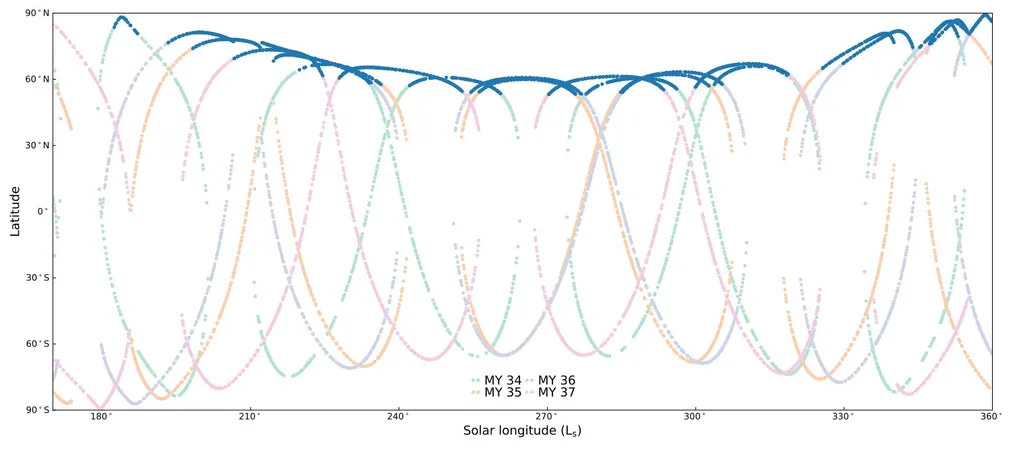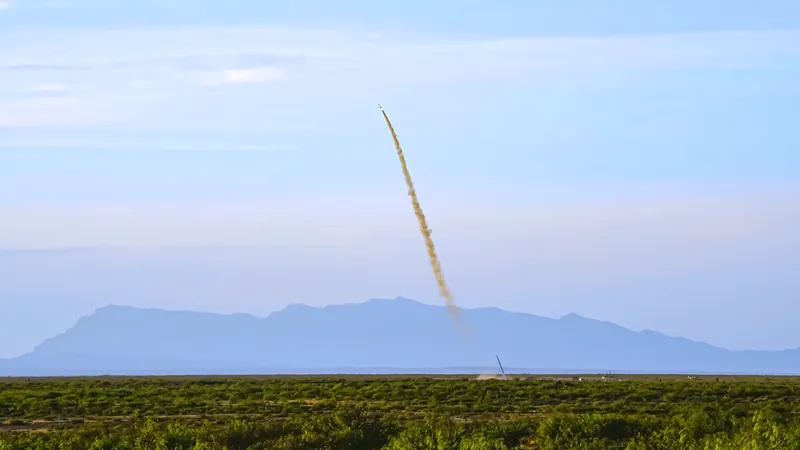
Is Enceladus Hiding Life? New Findings Shatter Assumptions About Saturn's Icy Moon
2025-09-12
Author: Daniel
Enceladus, Saturn’s intriguing little moon, measuring only 300 miles (500 kilometers) across, is making headlines in the quest for extraterrestrial life. Known for its spectacular geysers that erupt with water vapor, ice, and organic molecules, Enceladus has captured scientists’ imaginations as a potential cradle for life hidden beneath its icy exterior.
However, recent revelations from a planetary science conference in Finland have cast a cloud of uncertainty over these hopes. New research indicates that many of the organic molecules spewing from the moon’s plumes might actually form on the surface due to relentless radiation from Saturn's magnetic field, rather than emerging from a life-sustaining ocean below.
The Breakthrough Study
Led by Grace Richards from Italy’s National Institute for Astrophysics, the study urges caution in interpreting the chemical signatures found in Enceladus' geysers. While these plumes tantalize scientists with implications of alien life, they may also represent complex chemical reactions on the moon’s surface under radiation exposure.
In a remarkable experiment conducted in a specialized lab in Hungary, researchers simulated Enceladus’ frigid conditions. They froze mixtures of key elements like water, carbon dioxide, methane, and ammonia at -420 degrees Fahrenheit (-253 degrees Celsius) and bombarded them with high-energy ions found in Saturn’s environment.
Molecular Revelations
Using infrared spectroscopy, the team observed how radiation altered the chemical landscape. Their findings revealed the formation of carbon monoxide, cyanate, and ammonium, compounds previously identified in the plumes by NASA's Cassini spacecraft back in 2005. Sweetening the pot, warming these samples produced even more complex organics, hinting at potential building blocks for life.
Richards and her team noted that while some products have yet to be detected on Enceladus' surface, they confirm the plumes carry intriguing molecules. Yet, the new data brings forth an important question: Are these organic compounds products of the moon's subsurface ocean, or do they originate directly from the radiation-rich surface?
The Challenges Ahead
Interestingly, the timeframe required for these radiation-driven chemical reactions is comparable to the duration ice sits exposed on the surface. This makes it challenging to differentiate between organics from the ocean and those formed on the icy crust.
The implications of the study are thrilling yet sobering. They complicate the narrative that the plumes are definitive evidence of a life-sustaining ocean, while also emphasizing the potential for rich, life-relevant chemistry even in extreme environments. This discovery broadens the horizons for researchers exploring where prebiotic molecules might develop.
Looking Forward: Future Missions
NASA’s Cassini mission, which ended in 2017 with a dramatic dive into Saturn, offered humankind its first glimpse of Enceladus’ geysers. However, the spacecraft lacked the tools necessary to precisely identify whether the detected molecules originated from the ocean or the icy shell.
Exciting potential voyages are on the horizon, including a possible probe under the European Space Agency’s Voyage 2050 program designed to land on Enceladus and collect samples from its hidden ocean. NASA is also considering an "Orbilander" concept to sample the plumes directly from orbit.
Additionally, China is planning a multi-faceted mission involving an orbiter, a lander, and a deep-drilling robot to probe the moon's subsurface ocean in search of possible biosignatures. The quest for understanding what Enceladus hides beneath its icy veil continues!




 Brasil (PT)
Brasil (PT)
 Canada (EN)
Canada (EN)
 Chile (ES)
Chile (ES)
 Česko (CS)
Česko (CS)
 대한민국 (KO)
대한민국 (KO)
 España (ES)
España (ES)
 France (FR)
France (FR)
 Hong Kong (EN)
Hong Kong (EN)
 Italia (IT)
Italia (IT)
 日本 (JA)
日本 (JA)
 Magyarország (HU)
Magyarország (HU)
 Norge (NO)
Norge (NO)
 Polska (PL)
Polska (PL)
 Schweiz (DE)
Schweiz (DE)
 Singapore (EN)
Singapore (EN)
 Sverige (SV)
Sverige (SV)
 Suomi (FI)
Suomi (FI)
 Türkiye (TR)
Türkiye (TR)
 الإمارات العربية المتحدة (AR)
الإمارات العربية المتحدة (AR)